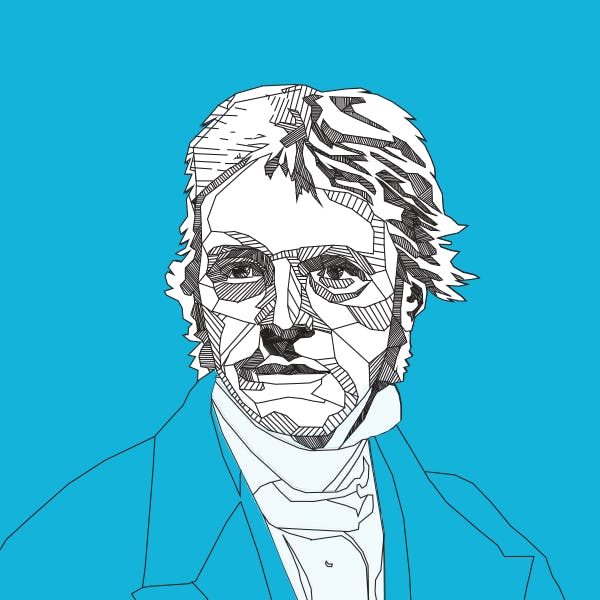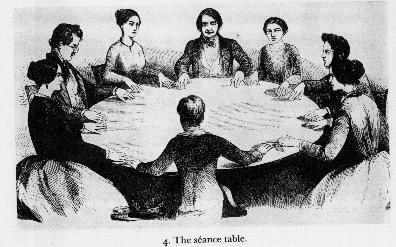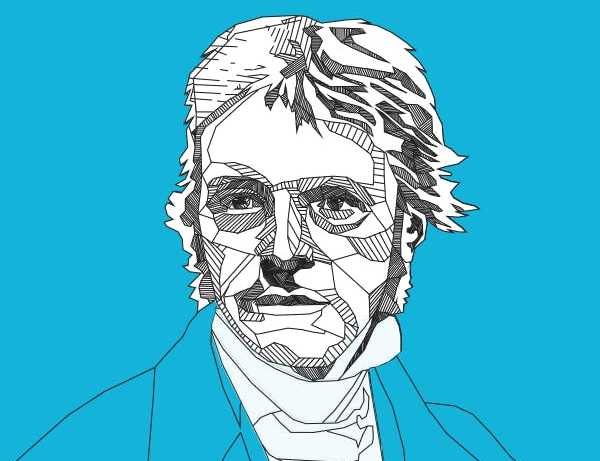
Born into one of the most rigid class systems in history, Michael Faraday was not destined to become a man of influence. Near the turn of the 19th century, he spent his childhood in a squalid London flat, with little opportunity and no formal education beyond elementary school.
But a lack of pedigree didn’t prevent Faraday from becoming one of the most influential scientists in the world. At age 14, he began to apprentice at a local shop where he learned the craft of bookbinding. After he strung the books together by day, he read them by night, hungry to understand the enigma of electricity. By age 21, Faraday continued his craft — and as luck would have it, a customer gave him a ticket to see leading scientist Humphry Davy demonstrate the marvel of electricity. Little did Faraday know, this would be the turning point of his life, and that of society’s at large.
In marvel of Davy’s lecture, Faraday bound a book that eloquently inked the scientist’s theories. The gesture impressed Davy, and he hired the young Faraday as his apprentice. The rest, as they say, is history. Here are just a few reasons why Faraday made our world what it is today.
Take the quiz: What Coding Course Is Right For Me?
1. He discovered electromagnetic induction
Before Faraday made it on the scene, scientists were aware of electricity, though they had done little to harness it for practical use. Take Giovanni Aldini, for example, who embarked on a tour around Europe in 1803 to electrocute a corpse in front of an audience. Electricity was such a mysterious force at the time, most laypeople saw it akin to magic more than anything else.
Faraday changed all that when he discovered electromagnetic induction in 1831. Through his innovative experiments, he found that by placing a conductor in a changing magnetic field, it would produce voltage across the conductor. In simpler terms? He found a way to cause an electric current, and that discovery was later applied to many devices we use today.

Thanks, Mr. Faraday.
By age 40, Faraday invented the electric motor, transformer, and generator. Without the discovery of electromagnetic induction, we wouldn’t have wireless energy transfer or pickups for the electrical guitar, either. That’s right: you can thank the sweet, sweet sound of Jimi Hendrix in no small part to Faraday’s discoveries. In sum, Faraday turned electricity from solely amusement to practical and wide-ranging uses.
2. His inventions transformed the home, farm, and factory
Forget about that fancy fridge that produces three different types of ice cubes on a whim. Before the advent of harnessable electricity, nearly every facet of human life functioned differently than it does now. People in Faraday’s time got by at home with oil lamps, wooden ice boxes, and coal stoves by dry sinks.
Faraday’s discoveries also came to revolutionize work for small-time farmers in just about every way imaginable. Electricity eliminated manual labor like pumping water, so that rural families no longer spent hours of their day hauling water to livestock or to the house. Automated systems for tasks like milking cows kept farmers from crippling their hands, and the threat of barn fires from knocked over oil lamps during early-morning milking decreased.
And although the industrial revolution was already underway when Faraway was born, cotton gins and power looms became old news as marvels like sewing machines and the telegraph refashioned the ways people worked and communicated. From cell phones to air conditioning, the modern conveniences we now take for granted were once but a fantasy without Faraday’s relentless wonder and curiosity to fuel them.

3. He devoted his life to teaching others
Just as Faraday found wonderment through Davy’s lectures, he also had a desire to extend that reverence to children and future scientists. As he once said, “The lecturer should give the audience full reason to believe that all his powers have been exerted for their pleasure and instruction.” Faraday understood not only the importance of teaching, but of the enthusiasm and love behind it. Coming from someone who had next to no formal education, his commitment to education was nothing short of extraordinary.
Faraday started an annual lecture and demonstrations for children that have continued from 1865 until present day, and prominent scientists like Julian Huxley, David Attenborough, Carl Sagan, and Susan Greenfield continued to pass the torch. Throughout his lifetime, even while struggling with dementia and depression for decades, Faraday’s devotion continually pushed the boundaries of science — and the world has never been the same since.
4. He campaigned against pseudoscience, which was rampant in England at the time

Like a Victorian ancestor to Bill Nye the Science Guy, Faraday found it alarming that despite significant scientific progress, the public was becoming increasingly fascinated with spiritualism. Home seances had become common; people claimed to be able to speak to dead relatives; apparitions appeared; tables spun and objects flew. Clairvoyants and mediums presented on stages to massive crowds. A few prominent scientists even hailed spiritualism as the new physics. Faraday saw all of this as a rejection of his efforts to create a more scientifically literate society.
Even though Faraday famously avoided the public eye, he felt it was his duty to reveal the spiritualists’ trickery through lectures and demonstrations. One such trick was “table-turning”. After receiving letter after letter attributing it to spirits, electricity, magnetism, or any other number of forces, Faraday set out to demonstrate that no supernatural forces were behind the phenomenon. In front of an audience of “very honorable” people, Faraday built a sensitive tabletop indicator lever to reveal that the table-turning wasn’t a result of supernatural forces, just the inadvertent mechanical pressure of people’s hands—it turned because people expected it to turn and unconsciously forced it themselves.
Inspired to make your own impact on technology? Learning to code is one way to get started! Try our free coding workshop, or learn Ruby and learn JavaScript for free today. Then decide for yourself: are coding bootcamps worth it?
If you're thinking about a new career but are wondering how to fund your bootcamp, read "How to Pay for a Coding Bootcamp" or visit out Tuition & Financing page.




